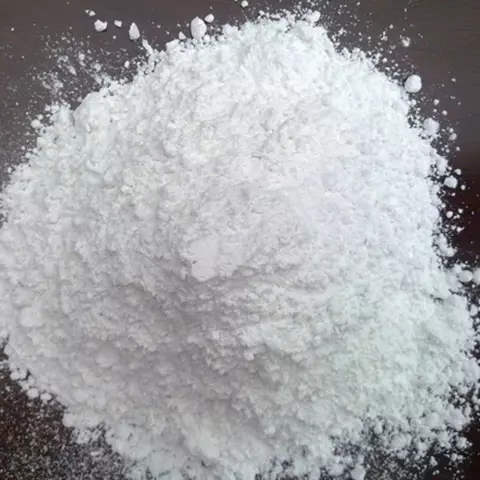- Author Rachel Wainwright [email protected].
- Public 2023-12-15 07:39.
- Last modified 2025-11-02 20:14.
White rice
Rice is a cereal crop and belongs to the Cereals family. This cultivated plant grows mainly in tropical and subtropical regions of the planet, in particular in Asia, America, Africa and Australia.
The ratio of BJU in the product

Source: depositphotos.com How to burn 365 kcal?
| Walking | 91 minutes |
| Jogging | 41 minutes |
| Swimming | 30 minutes. |
| A bike | 52 minutes |
| Aerobics | 73 minutes |
| Household chores | 122 minutes |
One of the most widespread agricultural crops is sowing rice, among other things belonging to a number of the most ancient food crops. The domestication of rice dates back over 9 thousand years.
In our country, the word "rice" began to be used only at the end of the 19th century, before that it was called "Saracen wheat" or "Saracen grain", a little later - "Sorochin millet".
Rice in the modern world is used everywhere, however, approaches to its use differ. They are conventionally divided into "eastern", which is typical for Asian countries and, accordingly, "western", which is preferred in the countries of Europe and America. In Asia, rice is an alternative to potatoes and wheat and forms the basis of many dishes. The eastern culture of eating rice is also curious: for example, the inhabitants of Asian countries eat rice sticky in lumps with their hands, the same rule applies to sushi. Long grain rice, crumbly and steamed, is usually eaten with chopsticks.
The variety of cereal varieties is so great that to this day it seems problematic to count them. By the most modest standards, the variety of this cereal reaches 1000 varieties. Rice is classified according to several parameters: type of processing, grain length, price - just to name a few.
Nutritional value, composition and calorie content of rice
Despite the variety of rice varieties, the composition of the cereal is almost the same. The product is rich in B vitamins, as well as E and PP. Useful elements in its composition: iron, zinc, calcium, manganese, phosphorus, potassium, selenium.
The nutritional value of rice consists of the following indicators: 6.7 g of proteins; 0.7 g fat; 78.9 g of carbohydrates. The calorie content of rice is determined mainly by its high carbohydrate content. However, this should not frighten those who follow the figure. The fact is that carbohydrates contained in cereals are complex, which means that they saturate and give energy to the body for a long time, slowly being absorbed and assimilated by the body. That is why the feeling of satiety, even with a small use of this cereal, comes quickly and lasts a long time. Despite the fact that the calorie content of rice is quite high - about 344 Kcal per 100 g, it is almost impossible to exceed the daily calorie requirement with it due to the properties described above.
Along with this, rice consists of 8% protein compounds. It is also important to note that gluten, the plant protein responsible for allergies, is not contained.
Useful properties of rice
The beneficial properties of various varieties of rice have been highly regarded in different countries for thousands of years.
Due to its high potassium content, this product neutralizes salt from the body, but does not contain it itself. This property of rice allows it to be recommended for diseases requiring a diet low in salt. This mainly concerns diseases of the joints, as well as disorders associated with kidney function or cardiovascular activity.
The complex of B vitamins contained in cereals improves the condition of hair, skin and nails, as well as strengthens the nervous system and participates in the formation of energy from nutrients.
The benefits of rice for dysfunction of the gastrointestinal tract is due to the starch and fiber contained in it, which envelop and protect the mucous membrane. Often, due to this property, the rice diet is recommended for gastritis and ulcers. Good rice water and diarrhea and indigestion.
In addition, experts are confident that the benefits of rice directly depend on its variety. So, brown rice contains much more minerals than refined white, because they are in its husk.
Black rice, along with the beneficial substances found in white, is also characterized by the presence of antioxidants, due to which it is recommended for patients with cancer.

Rice harm
For all the indisputable benefits of rice, it is not recommended to use it in large quantities. This is especially true for refined white rice. According to nutritionists, such rice is a refined product, excessive and frequent consumption of which leads to the development of diabetes mellitus and cardiovascular diseases.
The work of the gastrointestinal tract can be not only improved by eating rice, but also worsened by excessive consumption of it. The fact is that fiber and starch, which help with diarrhea, can cause constipation and block the work of the intestines. Such harm to rice does not depend on its variety.
It is also believed that this cereal belongs to the food that causes allergies. Therefore, in adults and children prone to allergic reactions, eating rice can cause rashes, itching and other signs of allergies.
Finally, the harm of rice is noticeable when it is improperly combined with other foods. Because it contains a large amount of carbohydrates, it is not recommended to be consumed with food containing a high percentage of fat. Otherwise, instead of a rice diet, the eater will gain weight.
YouTube video related to the article:
Found a mistake in the text? Select it and press Ctrl + Enter.






